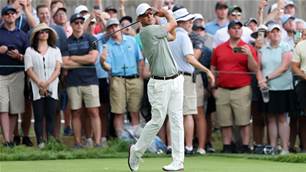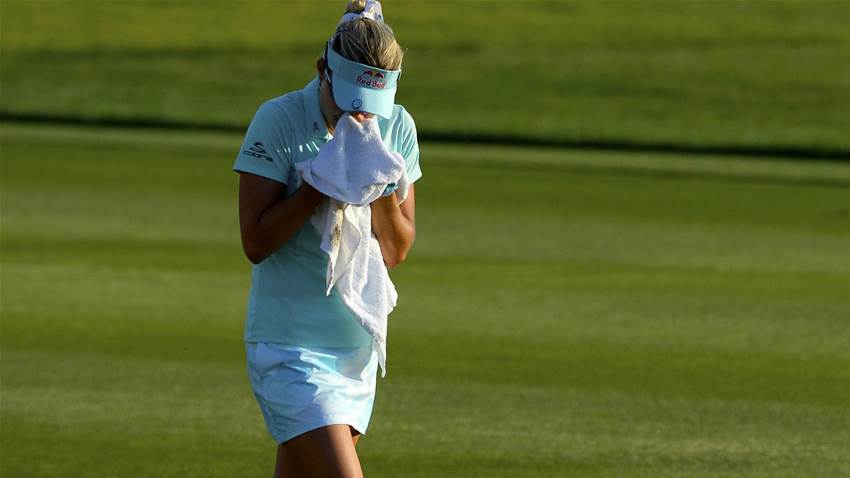The R&A and the USGA have issued a new decision on the Rules of Golf, which takes effect immediately, to limit the use of video evidence in the game.
The two organisations have also established a working group of LPGA, PGA Tour, European Tour, Ladies European Tour and PGA of America representatives to immediately begin a comprehensive review of broader video issues that arise in televised competitions, including viewer call-ins.
New Decision 34-3/10 implements two standards for Rules committees to limit the use of video:
- When video reveals evidence that could not reasonably be seen with the “naked eye” and;
- When players use their reasonable judgment to determine a specific location when applying the Rules. The full language of the Decision can be found here.
The first standard states “the use of video technology can make it possible to identify things that could not be seen with the naked eye.” An example includes a player who unknowingly touches a few grains of sand in taking a backswing with a club in a bunker when making a stroke.

If the committee concludes that such facts could not reasonably have been seen with the naked eye and the player was not otherwise aware of the potential breach, the player will be deemed not to have breached the Rules, even when video technology shows otherwise. This extends the provision from ball at rest moved cases, which was introduced in 2014 (Decision 18/4).
This comes after the almost farcical 2016 US Women’s Open, when Anna Nordqvist unknowingly brushed a few grains of sand during her backswing – a rules breach that was noticed only after reviewing the zoomed-in, high-definition footage. Nordqvist was assessed a two-shot penalty and, ultimately, lost the championship in a playoff.
The second standard applies when a player determines a spot, point, position, line, area, distance or other location in applying the Rules and recognises that a player should not be held to the degree of precision that can sometimes be provided by video technology. Examples include determining the nearest point of relief, or replacing a lifted ball.
"Golf has always been a game of integrity and we want to ensure that the emphasis remains as much as possible on the reasonable judgment of the player rather than on what video technology can show." - Martin Slumbers, Chief Executive R&A.
So long as the player does what can reasonably be expected under the circumstances to make an accurate determination, the player’s reasonable judgment will be accepted, even if later shown to be wrong by the use of video evidence.
Examples of when this rule could be enforced are estimating where a ball last crossed the margin of a hazard, where to drop when taking relief, and, yes, how a lifted ball is replaced in relation to a ball marker.
This comes in the wake of the Lexi Thompson debacle at the ANA Inspiration, where she was leading by two strokes on the back nine Sunday when she was notified by rules officials of a breach from the third round. She received a four-stroke penalty – two for playing from an incorrect spot, another two for signing an incorrect scorecard – after a TV viewer noticed she had incorrectly replaced her ball on a one-foot putt. Thompson ended up losing in a playoff.
Both of these standards have been extensively discussed as part of the Rules modernisation initiative and The R&A and the USGA have decided to enact this Decision immediately because of the many difficult issues arising from video review in televised golf.
The standards in the Decision do not change any of the current requirements in the Rules, as the player must still act with care, report all known breaches of the Rules and try to do what is reasonably expected in making an accurate determination when applying the Rules.
Video-related topics that require a deeper evaluation by the working group include the use of information from sources other than participants such as phone calls, email or social media and the application of penalties after a scorecard has been returned.

Martin Slumbers, Chief Executive of The R&A, said: “We have been considering the impact of video review on the game and feel it is important to introduce a Decision to give greater clarity in this area. Golf has always been a game of integrity and we want to ensure that the emphasis remains as much as possible on the reasonable judgment of the player rather than on what video technology can show.”
USGA Executive Director/CEO Mike Davis added: “This important first step provides officials with tools that can have a direct and positive impact on the game. We recognise there is more work to be done. Advancements in video technology are enhancing the viewing experience for fans but can also significantly affect the competition. We need to balance those advances with what is fair for all players when applying the Rules.”
The R&A and the USGA will consider additional modifications recommended by the working group for implementation in advance of January 1, 2019, when the new code resulting from the collaborative work to modernise golf’s Rules takes effect.
Related Articles

Playing From The Tips Ep.118: LIV Dallas, Rocket Classic, LPGA Teams, US Senior Open & more

Saturday at the U.S Open: As it happened












